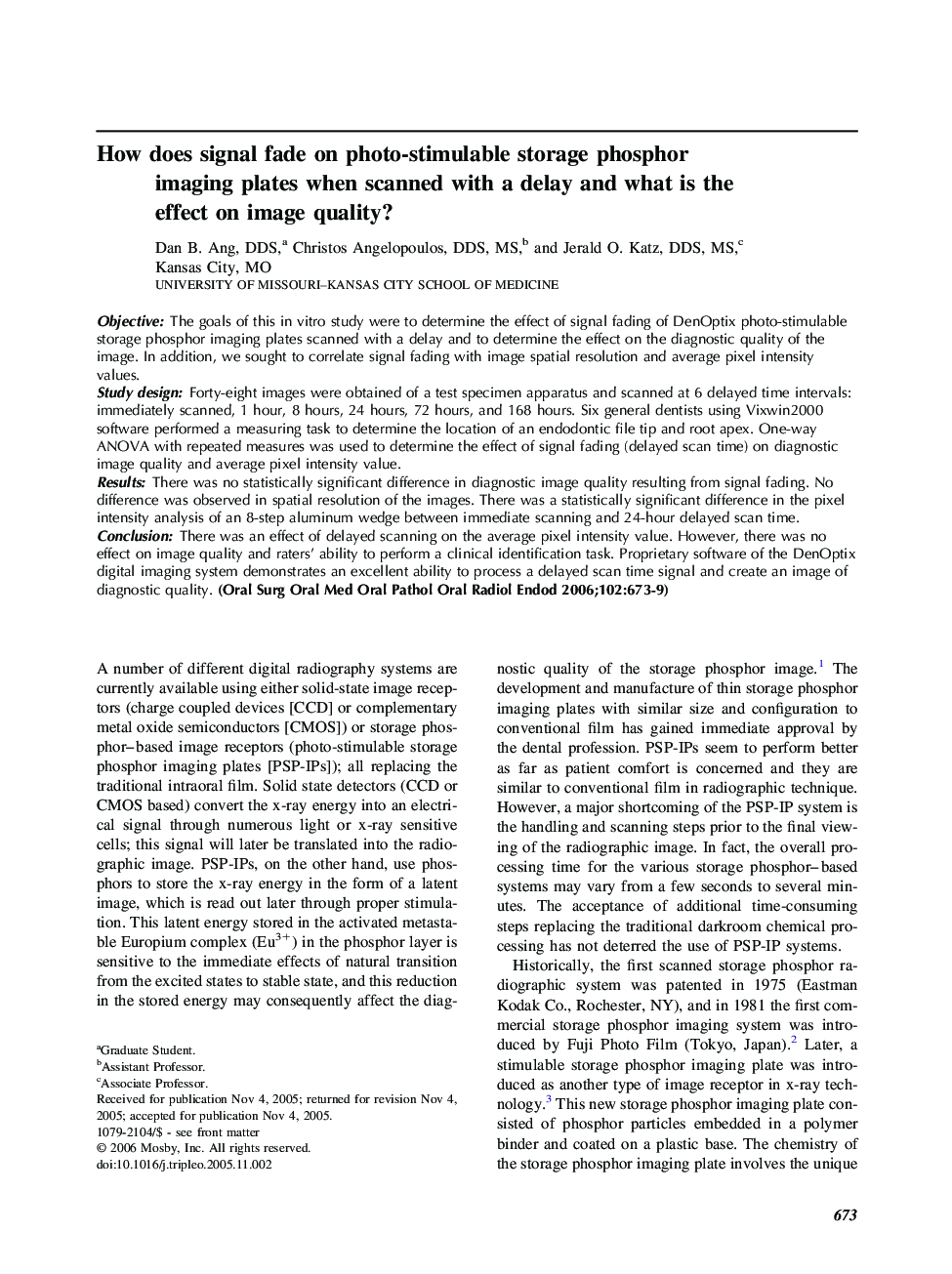| Article ID | Journal | Published Year | Pages | File Type |
|---|---|---|---|---|
| 3169819 | Oral Surgery, Oral Medicine, Oral Pathology, Oral Radiology, and Endodontology | 2006 | 7 Pages |
ObjectiveThe goals of this in vitro study were to determine the effect of signal fading of DenOptix photo-stimulable storage phosphor imaging plates scanned with a delay and to determine the effect on the diagnostic quality of the image. In addition, we sought to correlate signal fading with image spatial resolution and average pixel intensity values.Study designForty-eight images were obtained of a test specimen apparatus and scanned at 6 delayed time intervals: immediately scanned, 1 hour, 8 hours, 24 hours, 72 hours, and 168 hours. Six general dentists using Vixwin2000 software performed a measuring task to determine the location of an endodontic file tip and root apex. One-way ANOVA with repeated measures was used to determine the effect of signal fading (delayed scan time) on diagnostic image quality and average pixel intensity value.ResultsThere was no statistically significant difference in diagnostic image quality resulting from signal fading. No difference was observed in spatial resolution of the images. There was a statistically significant difference in the pixel intensity analysis of an 8-step aluminum wedge between immediate scanning and 24-hour delayed scan time.ConclusionThere was an effect of delayed scanning on the average pixel intensity value. However, there was no effect on image quality and raters’ ability to perform a clinical identification task. Proprietary software of the DenOptix digital imaging system demonstrates an excellent ability to process a delayed scan time signal and create an image of diagnostic quality.
